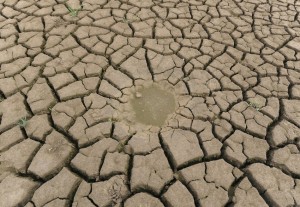'Last Call At The Oasis' Is Loud Wakeup Call On Global Water Crisis
 This weekend in theaters in Los Angeles, and in coming weeks in Phoenix, San Diego and Atlanta, a powerful new documentary premiers. Look closely at the early screening locations and you just might guess the topic: water scarcity.
This weekend in theaters in Los Angeles, and in coming weeks in Phoenix, San Diego and Atlanta, a powerful new documentary premiers. Look closely at the early screening locations and you just might guess the topic: water scarcity.“Last Call at the Oasis” does far more than recount the alarming woes of our country’s most water-stressed regions; it’s a beautifully produced, detailed picture of an immense global crisis bearing down on us as we speak – and thankfully a roadmap of sorts to what we can do about it.
I hesitate these days to even string together words like “immense global crisis” – there’s much crisis fatigue, and so many people and issues screaming for our attention.
But water’s one of the really big issues – we literally can’t live without it, our economies depend on it and in many regions supplies are running short. Two billion people are already being affected by water shortages. Population growth and climate change add even more pressure to the situation.
In America, where clean water is taken for granted, it’s far too easy to forget this reality. But if we can view what’s portrayed in “Last Call” as a giant opportunity to change our world for the better, it just might infuse us with hope and energy instead of dread.
One of the experts interviewed in “Last Call” frames a key source of our problem with water. “We think of it as the air,” says Robert Glennon, a law professor at University of Arizona, “infinite and inexhaustible.”
But it’s neither – even in hydrologically-blessed countries like our own.
We are overdrawing, over-polluting and under-pricing this exhaustible resource here and globally, and like an overdrawn bank account approaching zero we will soon see the consequences. Think oil in the Middle East – the pressures on vital resources even in faraway places can deliver disruption to our own, more secure doorsteps.
So we’ve got to get water use and management right, and it’s going to take loads of work and some true paradigm shifts. Here’s where the good news starts: Scientists, some major businesses, and organizations like mine are fixated on this challenge and are eager to spread their knowledge.
At last week’s Ceres conference in Boston, Michael E. Sullivan, IBM’s top executive for water solutions under the company’s “Smarter Planet” effort, told an audience of 600 that better access to data and better ways to analyze it have created big opportunities for companies to cut water use and save money.
IBM’s own experience at its big semiconductor plant in Burlington, VT, is an example worth emulating. The plant once used half of Burlington’s municipal water supply, but new water-management techniques cut that usage by 30 percent. An unanticipated surprise was that Burlington’s water prices rose as IBM’s usage dropped – but Sullivan said significant savings from reduced energy and chemical use led to cumulative savings totaling about $3.6 million annually – and that doesn’t count the environmental benefit.
Other Ceres conference speakers had their own real-world examples of dramatically reduced water use. Places like water-poor Singapore, which has shored up its water supply through massive investments in efficiency, rainwater capture and recycled wastewater. And giant water users like Coca-Cola, which has improved its water efficiency by nearly 20 percent and has a worldwide water stewardship program in place to monitor its water performance globally.
But greater political will and public focus is essential, and businesses can play a big role as catalysts. Global problems demand large-scale solutions. Business, researchers, NGOs and governments must join hands on water scarcity – just as they often do for medical, defense and other forms of research.
One great current example are two complementary and free-of-charge water risk tools pioneered by the World Resources Institute (WRI) and Ceres. With much of the data provided by Coca-Cola, WRI’s new Aqueduct tool maps localized indicators of water risks globally, identifying company operations and supply chains facing potential water challenges. Then companies can use detailed steps outlined in Ceres’ new Aqua Gauge tool to catalyze effective water risk management.
Collaborations like these get the whole picture: This one accurately values water and lets stakeholders help shape resource protection strategies. It also gives investors a tool to evaluate growing water risks in their portfolio companies.
More collaboration is vital. Journalist Alex Prud’homme, whose book “The Ripple Effect: The Fate of Freshwater in the Twenty-First Century,” inspired “Last Call at the Oasis,” put it this way in an interview at the Ceres conference:
“I’d like to see the private sector play a greater role in working with the public sector. The private sector’s done a reasonably good job at developing new water efficiencies. I think they can do a lot more, and I think they can share some of those lessons with public bodies. So I’d like to encourage them to become part of this policy debate.”
Water scarcity is a global issue – one that we will need to solve together. The business world is a crucial part of the equation, and as “Last Call” shows us, there’s no room for sitting this one out.
You can return to the main Market News page, or press the Back button on your browser.

